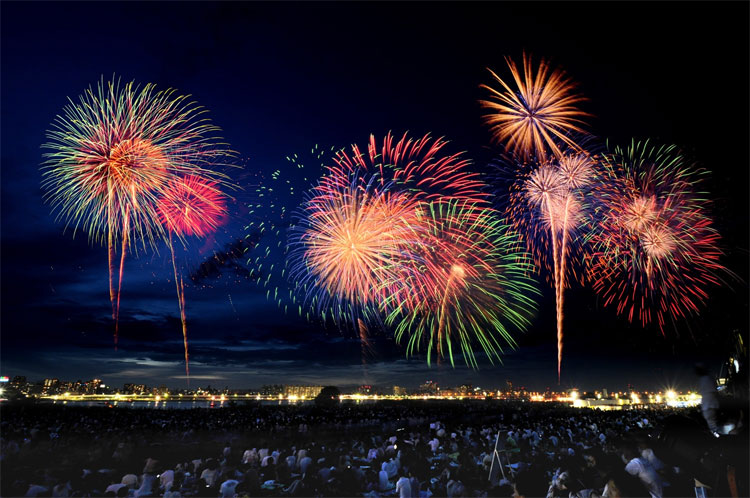Decode 'secret' fireworks colors
Fireworks are a complex and elaborate chemical product. In addition to explosives and great thrust, fireworks must also have other chemicals to create beautiful colors.
To create fireworks, many different chemicals must be used. The two main mechanisms of fireworks are burning and glowing.
Burning is produced from heat. The temperature burned the cannon and began to increase the brightness, it glowed from infrared - the light that the human eye could not see, then gradually switched to colors in seven white light colors.
When the cannon's temperature reaches a certain level, they will turn into different colors by the chemical composition of the cannon. In addition, the cannon also contains aluminum, magnesium and titanium to increase the temperature, leading to increased brightness of the fireworks.

To create fireworks, many different chemicals must be used.(Illustration).
After it has been burned, fireworks will explode into certain colors, determined by the chemicals. These chemicals must be pure substances, not to be mixed with other substances. Although only a very small amount of other chemicals will cause color damage or no color.
The fireworks emit red light made up of strontium salt and lithium salts. More specifically, lithium carbonate will produce red, while strontium carbonate will produce a lighter red color.
Green fireworks are composed of barium chloride compound. Blue is from a compound of copper chloride, but a copper with chlorinated one will produce the blue of the gems.
Specifically colors are created from the following elements:
- Orange: calcium chloride, calcium sulfate.
- Gold: the burning of iron with carbon, charcoal creates dark gold; Sodium nitrate, cryolite (jelly ice) produce pale gold.
- White: molten magnesium and aluminum, or barium oxide.
- Violet: a mixture of strontium (red) and copper (blue).
- Gray: molten aluminum with titanium, or magnesium powder.
- Why is the fireworks so gorgeous?
- You probably did not know: Gunpowder was born during the making of elixir
- The birth history of fireworks
- Let's see the structure of each firework
- The incalculable harm of fireworks
- Making fireworks
- Da Nang glows brightly in the fireworks night
- Farmers invented flood warning column with signal fireworks
- Video: Aircraft drone mounted fireworks release
- Revealing the first fireworks photo in the universe
- What if humans could record and decode dreams?
- Decode the most mysterious secret societies in the world
 'Fine laughs' - Scary and painful torture in ancient times
'Fine laughs' - Scary and painful torture in ancient times The sequence of numbers 142857 of the Egyptian pyramids is known as the strangest number in the world - Why?
The sequence of numbers 142857 of the Egyptian pyramids is known as the strangest number in the world - Why? Miracle behind the world's largest stone Buddha statue
Miracle behind the world's largest stone Buddha statue What is alum?
What is alum?